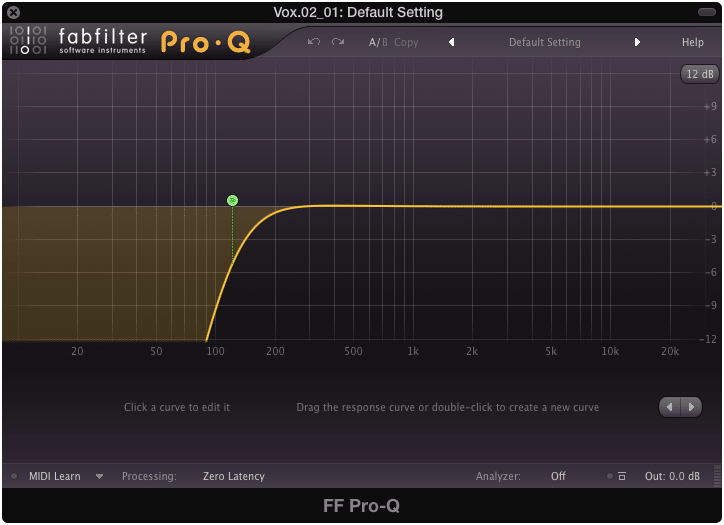What are Plosives and How to Fix Them
Engineers have been trying to avoid plosives for as long as the voice has been recorded.
There are of course many ways to avoid recording plosives during tracking, but what if that option is long past, and you’re stuck with a plosive heavy track?
You can remove plosives in post production by attenuating or fully cutting the frequencies they occupy. Since plosives are an overloading of a microphone’s capsule, due to a excessive air pressure, they typically occupy lower, bass heavy frequencies.
How do plosives occur?
Plosives start when a singer or speaker pronounces certain breath heavy consonants. The air from the vocalist in turn strikes a microphone’s capsule, causing overwhelming air pressure. This results in an either a windy sound, or if it is strong enough, a popping sound.
Typically the consonants that cause plosives to be recorded are most often the Pa, Ba, and Fa sound, although other “stop consonants" such as Ta or Ka, can cause the release of air needed to create a plosive.
Examples of Plosives:
'Pa' 'Ba' 'Fa' Plosives
How to Remove them From Recorded Audio
Option 1:
The frequency range that plosives occupy can range from 20Hz, all the way to roughly 1kHz.

The frequency spectrum of a 'Pa' plosive
That being said, the low frequencies will be the most prominent and noticeable to a listener.
Using a low-cut, or a high-pass filter, you can cut those frequencies up to about 120Hz. By doing so, you have attenuated the majority of the plosive’s energy, and made it significantly less perceivable.

A 24dB per octave slope was used for this high-pass filter.
Be careful not to cut too much of your vocal. If you do, you may lose a lot of your vocal’s natural low end.
Before:
Pay particular attention to the word 'Put'
After:
Option 2:
If you want to attenuate plosives, but not cut the low end out of your vocal there is another option.
By using a dynamic EQ, you can attenuate a certain band of frequencies, and set a threshold similar to how you would when using a compressor.
Whenever the signal crosses the threshold, the band of frequencies you set will be pulled down, effectively attenuating the signal, only when these plosives occur.

Although a dynamic EQ may not always be as effectively as a low cut filter, it should be consider a viable option for removing pops.
Using this method ensures that the sonic characteristic of your vocal stays intact, while attenuating plosives should they occur.
Before:
After:
Conclusion:
Post production may not be the best time to address plosives, since they can be avoided during tracking with some planning. That being said, they can still cause problems even if precautions have been taken.
Use these techniques along with others to ensure you vocal is clear, and ready or mixing and eventual mastering.
Can you think of another way to get rid of a plosive?




